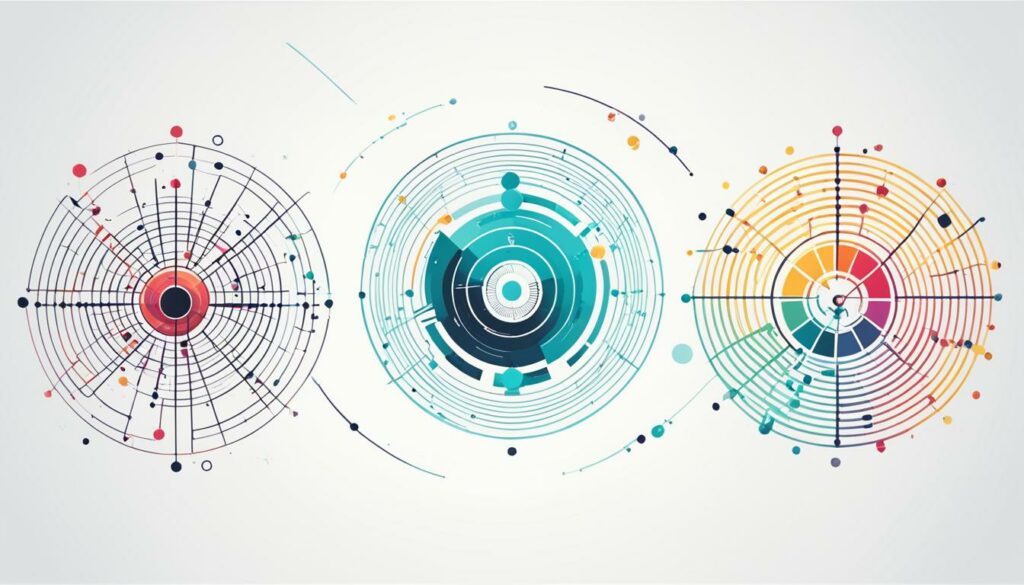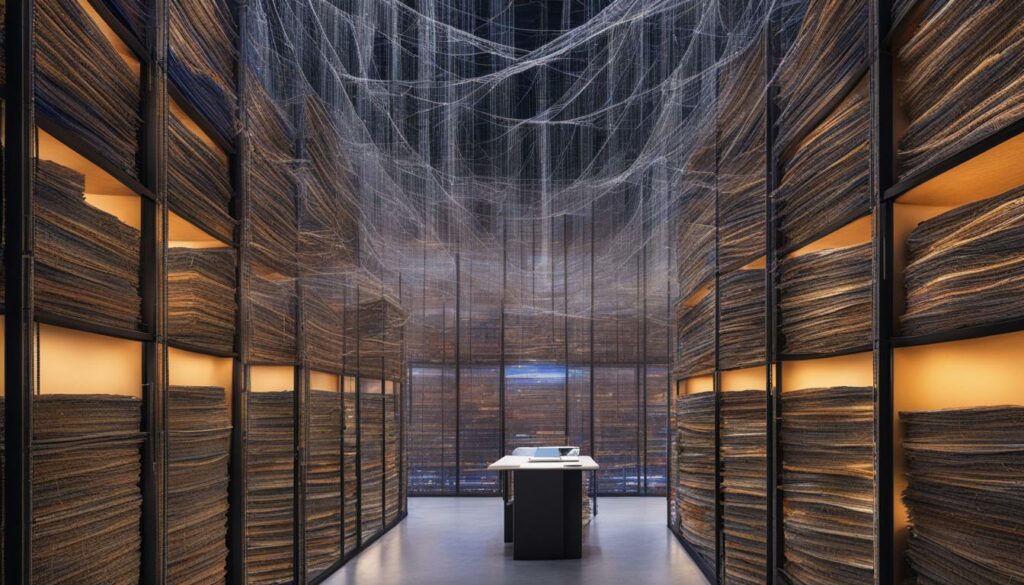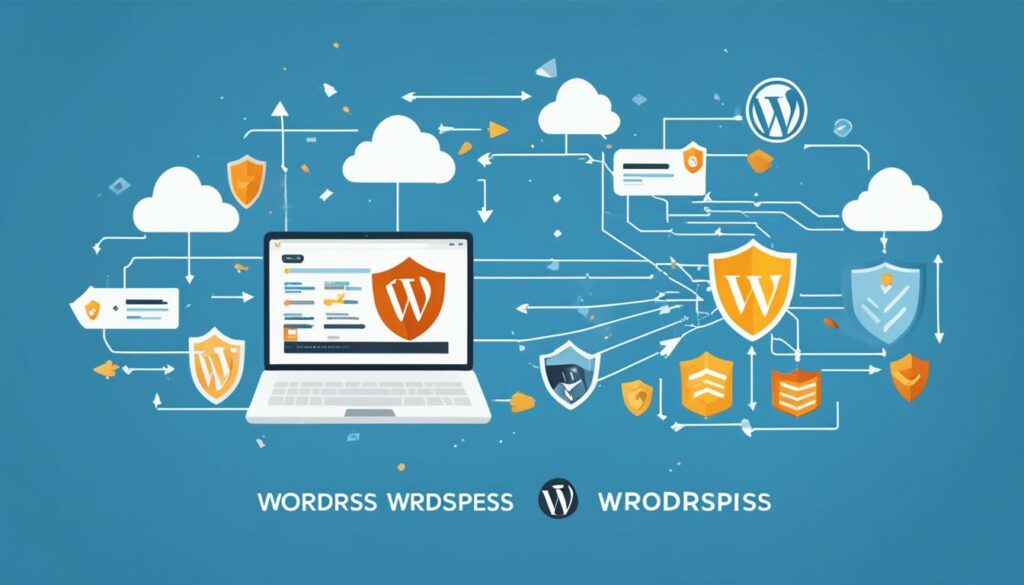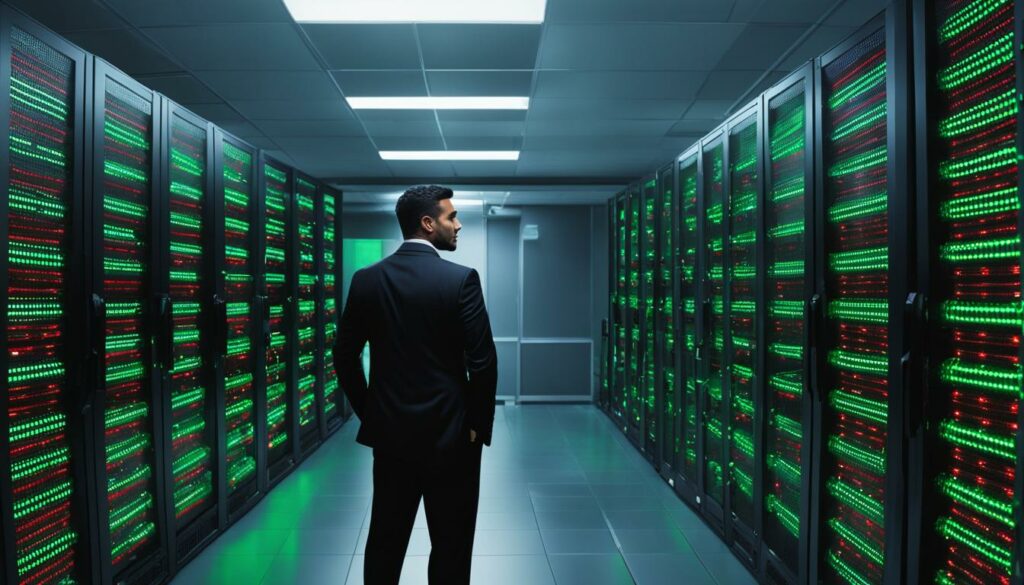Welcome to the world of web design, where creativity and technology merge to create visually stunning and user-friendly online experiences. Over the years, web design has evolved significantly, adapting to the ever-changing landscape of the digital era. From its humble beginnings to modern-day innovations, web design continues to push boundaries, setting new trends that shape the future of the industry.
The Evolution of Web Design: From the early days of basic HTML websites to the introduction of CSS and JavaScript, web design has come a long way. The shift towards responsive web design has been a game-changer, allowing websites to adapt seamlessly across different devices and screen sizes. This ensures that users have a consistent and engaging experience, regardless of whether they are browsing on a desktop, laptop, tablet, or smartphone. The focus on user experience (UX) and user interface (UI) design has also played a crucial role in creating intuitive and user-friendly interfaces that enhance the overall browsing experience.
Web Design Trends: As we move into the future, exciting trends are emerging in the world of web design. Sci-fi inspired design is taking center stage, with futuristic aesthetics and high-tech solutions capturing the imagination of designers and users alike. Textured design is making a comeback, adding depth and realism to websites, creating a tactile experience for users. Hyper-minimalism emphasizes simplicity and clean aesthetics, providing a clutter-free browsing experience that focuses on essential content. Adaptive headers and multiplanar scrolling bring interactivity and dynamic elements to web design, engaging users in new and exciting ways. Hand-drawn logo elements and teleprompter typography add a personal and engaging touch to branding, making websites stand out from the crowd.
Modern Web Design: Today, web design goes beyond aesthetics. It is about creating mobile-friendly websites that are intuitive, interactive, and optimized for performance. With advancements in web development technologies, designers have more tools at their disposal to create immersive and engaging experiences. Whether it’s integrating voice recognition and search for a seamless user experience or leveraging virtual reality (VR) and augmented reality (AR) to create captivating interactions, modern web design is pushing the boundaries of what is possible.
Key Takeaways:
- The evolution of web design has led to responsive and user-friendly websites.
- Emerging trends include sci-fi inspired design, textured design, hyper-minimalism, adaptive headers, and multiplanar scrolling.
- Modern web design focuses on mobile-friendliness, interactivity, and optimized performance.
- Advancements in technology like AI, VR, AR, and voice recognition are shaping the future of web design.
- BoostedHost offers WordPress hosting for optimal performance. Sign up now through this link: www.boostedhost.com/wordpress-hosting.
Stay ahead of the curve by embracing the latest web design trends and technologies. The future of web design is exciting, challenging, and full of potential. It’s time to create digital experiences that leave a lasting impression on users and shape the way we interact with the online world.
Sci-Fi Inspired Design
Immerse your website in the futuristic world of sci-fi with the trend of sci-fi inspired design. This design approach embraces aesthetics that resemble something out of a sci-fi movie or video game, providing a visually stunning and captivating experience for your users.
In industries such as fintech and healthtech, where high-tech and futuristic solutions are in demand, incorporating sci-fi inspired design elements can help your website stand out from the competition. By blending advanced technology with innovative design, you can create a user experience that feels cutting-edge and forward-thinking.
Examples of sci-fi inspired design include dark-themed websites that evoke a futuristic atmosphere, graphics and illustrations that resemble advanced technology, and space-inspired backgrounds that transport users to otherworldly realms. By leveraging these design elements, you can create a visually engaging website that captures the imagination of your audience.
| Website | Description |
|---|---|
| www.futuristicfintech.com | A fintech website with a sleek dark theme, holographic graphics, and a futuristic user interface. |
| www.healthtechinnovation.com | A healthtech website featuring a space-inspired background, interactive illustrations, and a sci-fi inspired navigation. |
| www.techrevolutionsolutions.com | A technology solutions website with a cyberpunk aesthetic, neon lights, and futuristic typography. |
Incorporating sci-fi inspired design into your website will not only make it visually impressive but will also create a unique and memorable experience for your users. By embracing the future, you can leave a lasting impact on your audience and stay ahead of the curve in the fast-paced world of web design.
Textured Design
Textured design is a reaction to the dominance of flat graphics and neon colors in web design. Brands that make physical products or provide real-world services are adopting textured design to create a sense of realism and enhance the tactile experience for users. This trend involves using textures and depth in website elements to bring a sense of authenticity and humanity to the design.
“Textured design adds an element of realism to our website, making it more visually engaging and providing a tactile experience for our customers. It helps us showcase the quality and craftsmanship of our products in a digital space.”
By incorporating textured design, websites can create a more immersive and engaging user experience. Whether it’s a subtle pattern in the background or a 3D effect on buttons and icons, textured design adds depth and visual interest to the overall design.
Ecommerce websites are leveraging textured design to showcase the tactility of their products through videos and images. By using textured backgrounds and high-resolution product images, brands can create a more realistic representation of their offerings. This allows customers to get a better sense of the product and its quality before making a purchase.
| Benefits of Textured Design | Examples |
|---|---|
|
|
Textured design adds depth and dimension to web pages, creating a more immersive and realistic browsing experience. By incorporating realistic textures, such as wood grain or fabric patterns, websites can visually connect with users and evoke a tactile response.
Hyper-Minimalism
Looking for a clean and uncluttered web design? Hyper-minimalism is the trend you need to explore. With its emphasis on simplicity and white space, hyper-minimalism offers a refreshing approach to web design that prioritizes user-friendly experiences.
In hyper-minimalistic designs, less is more. By stripping away unnecessary elements and focusing on essential content, you can create a website that provides a smooth and enjoyable browsing experience for your users. The minimalist aesthetic not only looks visually appealing but also enhances the usability of your site.
White space or negative space plays a crucial role in hyper-minimalism. It allows your content to breathe and reduces visual clutter, giving your users a sense of tranquility and clarity. By strategically using white space, you can guide your users’ attention to key elements and create a visually balanced layout.
When implementing hyper-minimalism in your web design, consider using clean lines, minimal color palettes, and clear typography. These elements contribute to the overall simplicity of your design, making it easier for users to navigate and understand your content.
One of the benefits of hyper-minimalistic design is its adaptability. Whether you’re creating a website for a local business, a personal portfolio, or an e-commerce store, hyper-minimalism can be tailored to suit your specific needs. Its versatile nature allows you to showcase your content in a concise and impactful manner.
If you’re ready to embrace the beauty of simplicity in web design, BoostedHost’s WordPress Hosting is your ideal partner to bring your hyper-minimalistic vision to life. With reliable performance and expert support, BoostedHost empowers you to create captivating and user-friendly websites.
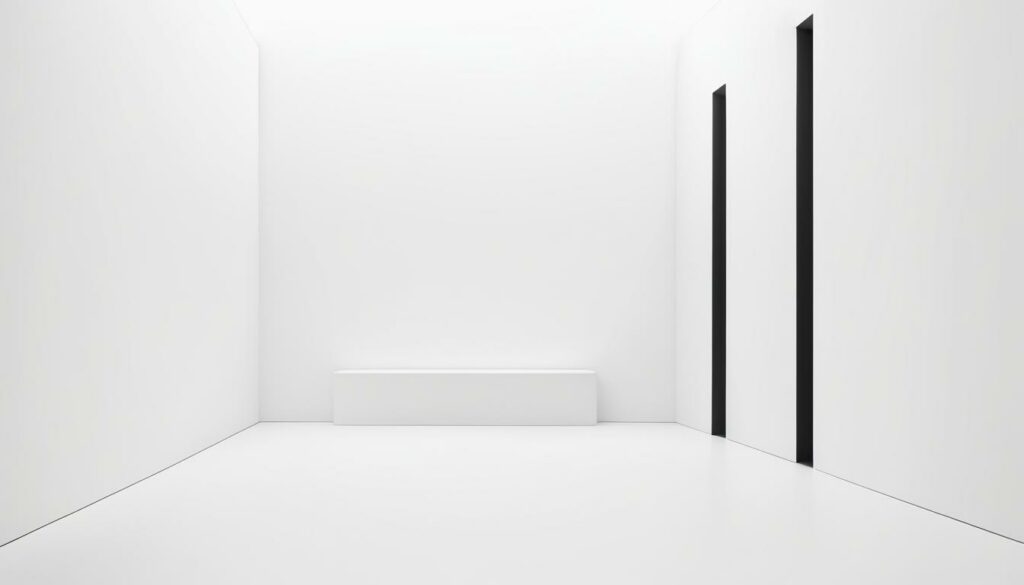
Create a user-friendly web design that captures attention and fosters engagement with hyper-minimalism. Sign up now for BoostedHost’s WordPress Hosting here and experience the power of simplicity in web design.
Adaptive Headers
In the world of web design, headers play a crucial role in capturing users’ attention and providing a seamless browsing experience. However, traditional transparent headers can sometimes pose challenges when it comes to readability and usability. That’s where adaptive headers come in.
Adaptive headers are a solution designed to address the transparency issue while maintaining the visual appeal of the header. Unlike traditional transparent headers, adaptive headers change their appearance based on the background they pass over. This adaptation ensures a seamless and visually appealing transition, enhancing the overall user experience.
With adaptive headers, you can bid farewell to worries about a header fading into an unreadable background. These headers intelligently adjust their color, opacity, or even design elements to remain visible and legible regardless of the background they come in contact with.
By embracing adaptive headers, web designers can create a seamless web design that perfectly blends with different background colors and textures. This not only enhances the aesthetic appeal of the website but also improves the user experience by ensuring that critical information remains easily accessible at all times.
Benefits of Adaptive Headers
- Enhanced User Experience: Adaptive headers address the challenges of transparency by ensuring readability and visibility, ultimately improving the user experience.
- Seamless Visual Transition: The ability of adaptive headers to adapt to the background creates a smooth and visually appealing transition, offering a seamless browsing experience.
- Improved Branding: By maintaining the header’s visibility and legibility, adaptive headers reinforce the brand identity and make a lasting impression on users.
So, whether you are designing a website for your business or working on a personal project, embracing adaptive headers can be a game-changer. It allows you to create a visually stunning and user-friendly website that captures attention, communicates effectively, and delivers an exceptional user experience.

Boost your website’s design with adaptive headers, sign up now for WordPress Hosting from BoostedHost, a reliable hosting provider renowned for seamless web solutions.
| Key Features of Adaptive Headers | Benefits |
|---|---|
| Adapts to background colors and textures | Enhances visual appeal and user experience |
| Increases header visibility and legibility | Improves information accessibility |
| Seamless transition between different backgrounds | Delivers a smooth browsing experience |
Multiplanar Scrolling
Multiplanar scrolling is a game-changing trend in web design that takes user experience to the next level. By allowing content to scroll in multiple directions, including the x and z axes, multiplanar scrolling creates an interactive and dynamic browsing experience that engages users and keeps them hooked. This innovative design technique brings a sense of depth and movement to websites, similar to the immersive gameplay experience of old-school video games.
With multiplanar scrolling, web designers can create visually stunning and captivating websites where content moves both vertically and horizontally. This adds an extra layer of interactivity and engagement, making the browsing experience more dynamic and memorable. Whether it’s a website with horizontal scrolling animations or content that appears to move forward or backward in space, multiplanar scrolling takes user engagement to new heights.
Key Features of Multiplanar Scrolling:
- Vertical and horizontal scrolling
- Engaging and interactive browsing experience
- Depth and movement in web design
- Immersive gameplay-like experience
To give you a better idea of how multiplanar scrolling works, take a look at this captivating example:

|
“Multiplanar scrolling takes web design to a whole new level. It’s like exploring a virtual world within a website. The scrolling movements add a sense of depth, making the website more engaging and interactive.”
– Web Design Enthusiast
As you can see, multiplanar scrolling offers endless possibilities for creating visually stunning and interactive web experiences. Incorporating this trend in your web design projects can elevate your websites to new heights, captivating users and providing them with a dynamic user experience that they won’t easily forget.
Hand-Drawn Logo Elements
Hand-drawn logo elements are a refreshing departure from the digital flat logos that have dominated recent design trends. This unique approach adds a human touch to the design, creating a sense of authenticity and relatability for your brand. By incorporating hand-drawn elements into your logo, whether as specific letters or shapes, or as the entire logo itself, you can capture the attention of your audience and create a memorable brand identity.
Raw and relatable design is at the heart of this trend. Hand-drawn logo elements evoke a sense of craftsmanship and creativity that resonates with your target audience. It’s a way to break free from the standardized, cookie-cutter logos and engage your customers on a deeper level. Whether you’re a small business or a large corporation, a hand-drawn logo can set you apart from the competition and create a lasting impression.
Unique branding is one of the key benefits of hand-drawn logo elements. Your logo becomes a visual representation of your brand’s personality and values, reflecting your distinct identity. No two hand-drawn logos are exactly the same, making them truly one-of-a-kind. This uniqueness helps your brand stand out and creates a strong connection with your audience.
“A hand-drawn logo adds a touch of personality and authenticity to your brand, making it relatable and memorable to your audience.”
Hand-drawn logo elements can take various forms, from simple and minimalist designs to intricate and detailed illustrations. The style you choose depends on your brand’s identity and the message you want to convey. Whatever approach you take, the hand-drawn aesthetic adds a sense of charm and individuality to your logo.
Here are a few examples of how hand-drawn logo elements can be incorporated:
- A clothing brand may use a hand-drawn sketch of a garment or an accessory to symbolize their unique fashion style.
- A coffee shop might use a hand-drawn illustration of a coffee cup or a coffee bean to represent their artisanal approach to brewing.
- An art studio may create a hand-drawn logo featuring paintbrush strokes or sketching tools to showcase their creative process.
Hand-drawn logo elements are versatile and can be adapted to various industries and design styles. Whether you’re aiming for a playful and whimsical look or a vintage and retro feel, a hand-drawn logo can elevate your brand’s visual identity and make a lasting impression.
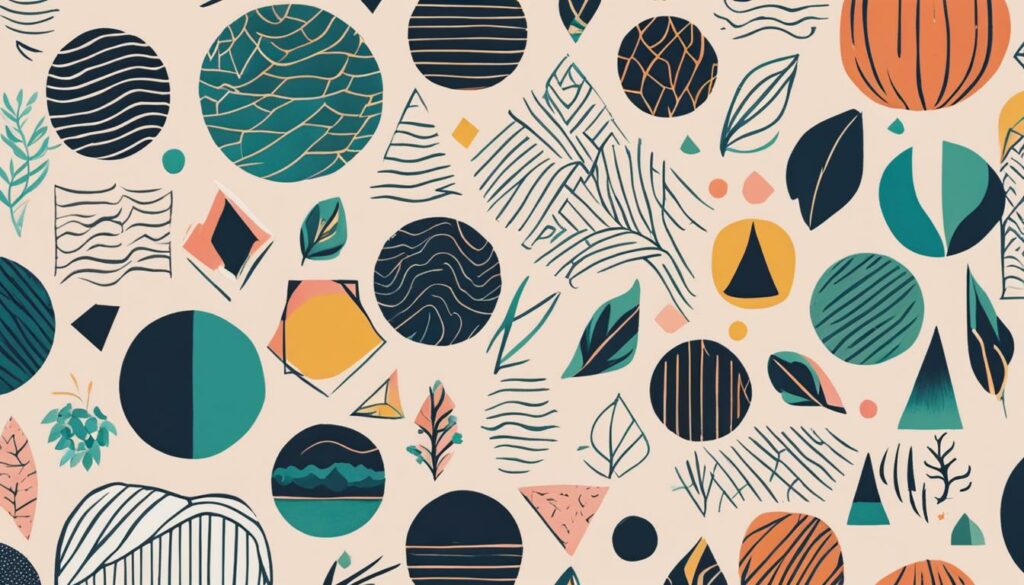
BoostedHost is the ideal hosting provider for your website. Their WordPress Hosting offers optimal performance, ensuring your website is fast, secure, and reliable. Sign up now through this link: www.boostedhost.com/wordpress-hosting.
| Benefits of Hand-Drawn Logo Elements |
|---|
| Adds a human touch to your design |
| Creates a sense of authenticity and relatability |
| Reflects your brand’s unique identity |
| Makes your logo memorable and distinctive |
| Allows for versatility and adaptability in design |
Teleprompter Typography
When it comes to presenting large amounts of text on a webpage, teleprompter typography is a game changer. It offers a user-friendly and engaging way to showcase content, preventing information overload and allowing users to focus on one section at a time. This trend involves a gradual transition of text from a less readable format, such as light or semi-transparent, to a more legible format like black and opaque as the user scrolls down the page. By implementing teleprompter typography, web designers can create an immersive reading experience that keeps visitors engaged from start to finish.
One example of teleprompter typography in action can be seen on typography-based homepages. As users scroll, the text gradually becomes more prominent, making it easier to read and comprehend. This approach ensures that the content is visually appealing while maintaining a user-friendly format.
Teleprompter typography not only enhances the readability of your content but also adds an element of interactivity and flow to the user experience. By guiding users through the text in a dynamic manner, you can create a more engaging web design that holds their attention and encourages them to explore further.
| Benefits of Teleprompter Typography | Examples |
|---|---|
|
|
“Teleprompter typography offers a seamless way to present content, striking a balance between readability and engagement. By gradually revealing the text as users scroll, you can create a captivating experience that keeps them hooked from start to finish.”
Voice Recognition and Search
Voice recognition and search are revolutionizing web design, enhancing user experience and accessibility. The increasing adoption of virtual assistants and voice-based information retrieval has made voice optimization an essential element in web design. To meet the demands of voice search queries, web designers need to optimize their platforms and incorporate voice-activated features.
By leveraging voice recognition technology, websites can better serve individuals with disabilities or challenges in using keyboards or touch screens, offering them a more inclusive browsing experience. Voice-optimized websites are designed to understand and respond to voice commands, improving usability and convenience.
Examples of voice-optimized websites include those with voice-activated navigation, allowing users to browse through the site using voice commands. Additionally, integrating voice search keywords enables users to search for specific content using their voice, providing a more efficient and intuitive way to find information.
Benefits of Voice Recognition and Search in Web Design
- Enhanced accessibility for users with disabilities or challenges in using traditional input methods
- Improved user experience through voice-activated navigation
- Efficient and intuitive information retrieval through voice search
Voice recognition and search are transforming the way we interact with websites, bringing a new level of convenience and accessibility to users. As technology continues to advance, incorporating voice optimization in web design will become increasingly important to provide inclusive and user-friendly experiences.
Virtual Reality (VR) and Augmented Reality (AR)
Virtual reality (VR) and augmented reality (AR) technologies are revolutionizing web design, providing users with immersive and interactive experiences that transcend traditional 2D interfaces. With VR, users can enter simulated environments and have a fully immersive experience, while AR overlays digital elements onto the real world.
By incorporating VR and AR elements into web design, you can create captivating user experiences that stand out from the competition. These technologies enable users to explore products in virtual 3D environments, engage in interactive storytelling experiences, and participate in educational encounters like never before.
To illustrate this, consider websites that offer interactive 3D models allowing users to manipulate and explore products from all angles. Another example would be virtual try-on features that allow users to see how clothing or accessories look on themselves before making a purchase. Additionally, AR enhances learning experiences by overlaying digital information onto real-world objects or environments.
By blending virtual and real worlds, VR and AR create immersive user experiences that captivate and engage visitors. Implementing these technologies in web design will undoubtedly set your website apart and leave a lasting impression on your audience.
Don’t miss out on the opportunity to incorporate VR and AR into your web design. Create a website that offers truly immersive and interactive experiences, and captivate your audience like never before.
Minimalism
Minimalism in web design focuses on simplicity and clean aesthetics. By decluttering interfaces and embracing minimalistic design, websites can offer a refreshing and user-friendly experience. With minimalism, loading times are improved, and brand identity is enhanced.
Minimalistic design is particularly beneficial for mobile users as it ensures sufficient screen space and fast connectivity. The clean aesthetics of minimalistic websites create a sleek and modern look, capturing the attention of users. Simplicity is key, with precise language and easy navigation at the forefront.
One of the key aspects of minimalistic web design is the use of minimal colors, which helps to create a visually appealing and focused interface. Typography plays a crucial role in minimalism, with clean and legible fonts enhancing readability and overall user experience.
“Simplicity is the ultimate sophistication.” – Leonardo da Vinci
The user-friendly interfaces created through minimalism make it easier for visitors to find the information they need quickly and efficiently. With reduced distractions and clutter, users can focus on the essential elements of the website without being overwhelmed.
Benefits of Minimalism in Web Design:
- Improved loading times
- Enhanced brand identity
- Sleek and modern aesthetics
- Sufficient screen space for mobile users
- Fast connectivity
- Precise language and easy navigation
- Focused and visually appealing interfaces
- Legible and clean typography
- Reduced distractions and clutter
- Optimized user experience
| Elements of Minimalism | Benefits |
|---|---|
| Clean and minimal colors | Creates visually appealing interfaces |
| Legible typography | Enhances readability and user experience |
| Focused content | Improves information retrieval and navigation |
| Ample white space | Brings clarity and emphasizes important elements |
| Simplified navigation | Makes it easier for users to find what they need |
| Responsive design | Provides consistent user experience across devices |
Conclusion
The future of web design is an exciting and ever-evolving industry. With the constant advancements in technology and changing user behaviors, web designers need to stay ahead of the curve by embracing new trends and predictions. By incorporating futuristic design elements and emerging technologies, such as sci-fi inspired graphics, adaptive headers, VR, AR, AI, and voice recognition, web designers can create immersive and personalized experiences that enhance user interactions.
Web design trends like minimalism, custom illustrations, and data visualization also play a crucial role in shaping the future of web development. Minimalistic designs with clean aesthetics and user-friendly interfaces improve loading times and provide a seamless browsing experience across various devices. Custom illustrations and data visualization techniques help bring complex information to life and make it more digestible for users.
In this evolving industry, user experience remains the key focus. Creating user-friendly and visually appealing websites is essential to keep up with the expectations of modern users. By embracing the latest web design trends, staying updated with emerging technologies, and continuously improving user experiences, web designers have the power to shape the future of web development.
For optimal performance and seamless web hosting, we recommend WordPress Hosting from BoostedHost. Sign up now through this link: www.boostedhost.com/wordpress-hosting.
FAQ
Q: What is web design evolution?
A: Web design evolution refers to the continuous development and improvement of web design techniques, styles, and trends over time. It encompasses changes in user experience, user interface, responsive design, and the incorporation of new technologies to enhance the overall browsing experience.
Q: What are some popular web design trends?
A: Some popular web design trends include sci-fi inspired design, textured design, hyper-minimalism, adaptive headers, multiplanar scrolling, hand-drawn logo elements, teleprompter typography, voice recognition and search, and the use of virtual reality and augmented reality technologies.
Q: What is sci-fi inspired design?
A: Sci-fi inspired design is a trend that incorporates futuristic aesthetics into web design. It involves using graphics and elements that resemble something out of a sci-fi movie or video game. This trend is particularly popular in industries such as fintech and healthtech, where there is a demand for high-tech and futuristic solutions.
Q: What is textured design?
A: Textured design is a trend that adds depth and realism to web design. It involves using textures and tactile elements in website elements to create a sense of authenticity and enhance the overall browsing experience. Textured design is often adopted by brands that make physical products or provide real-world services.
Q: What is hyper-minimalism?
A: Hyper-minimalism is a web design trend that emphasizes simplicity, with a focus on white space and minimalistic layouts. It allows for a more relaxed and uncluttered browsing experience, presenting content in a clean and precise manner. Hyper-minimalism is suitable for local businesses and individuals who want to create user-friendly websites with a minimalist aesthetic.
Q: What are adaptive headers?
A: Adaptive headers are a solution to the issue of transparency in header design. They change their appearance based on the background they pass over, allowing for a seamless and visually appealing transition. Adaptive headers enhance the overall user experience and ensure that the header remains visible and legible regardless of the background.
Q: What is multiplanar scrolling?
A: Multiplanar scrolling is a web design trend that allows content to scroll in multiple directions, including the x and z axes. It adds a dynamic and interactive element to user experience, creating engaging and immersive experiences where content moves both vertically and horizontally.
Q: What are hand-drawn logo elements?
A: Hand-drawn logo elements are a departure from the digital flat logos that have been popular in recent years. This trend adds a human touch to the design and creates a sense of authenticity and relatability. Hand-drawn elements can be incorporated into a logo as specific letters or shapes, or the entire logo can have a hand-drawn appearance.
Q: What is teleprompter typography?
A: Teleprompter typography is a solution for presenting large amounts of text in a user-friendly and engaging way. It involves gradually transitioning text from a less readable format to a more readable format as the user scrolls down the page. This helps to prevent information overload and allows users to focus on one section at a time.
Q: Why is voice recognition and search important in web design?
A: Voice recognition and search are becoming essential elements in web design due to the increasing adoption of virtual assistants and voice-based information retrieval. Optimizing websites for voice search queries and incorporating voice-activated features improves the user experience, especially for individuals with disabilities or challenges in using keyboards or touch screens.
Q: How do virtual reality (VR) and augmented reality (AR) impact web design?
A: Virtual reality and augmented reality technologies revolutionize web design by offering immersive and interactive experiences. They enable users to explore and interact with content in ways that go beyond traditional 2D interfaces. Incorporating VR and AR elements enhances user engagement and makes websites stand out.
Q: What is minimalism in web design?
A: Minimalism in web design focuses on simplicity and clean aesthetics. It declutters interfaces, improves loading times, and enhances brand identity. Minimalistic design is particularly beneficial for mobile users, as it ensures sufficient screen space and fast connectivity. It creates user-friendly websites with precise language and easy navigation.
Q: How does web design evolve over time?
A: Web design evolution is driven by technological advancements, changing user behaviors, and emerging design trends. Web designers need to keep up with the latest trends and predictions to create user-friendly and visually appealing websites. By embracing futuristic design elements and incorporating emerging technologies, web design continues to evolve and shape the future of the industry.

